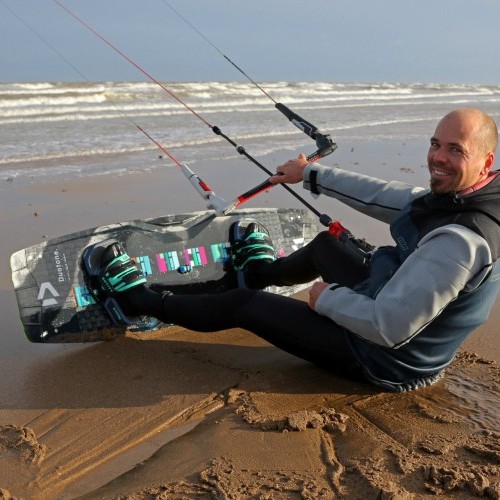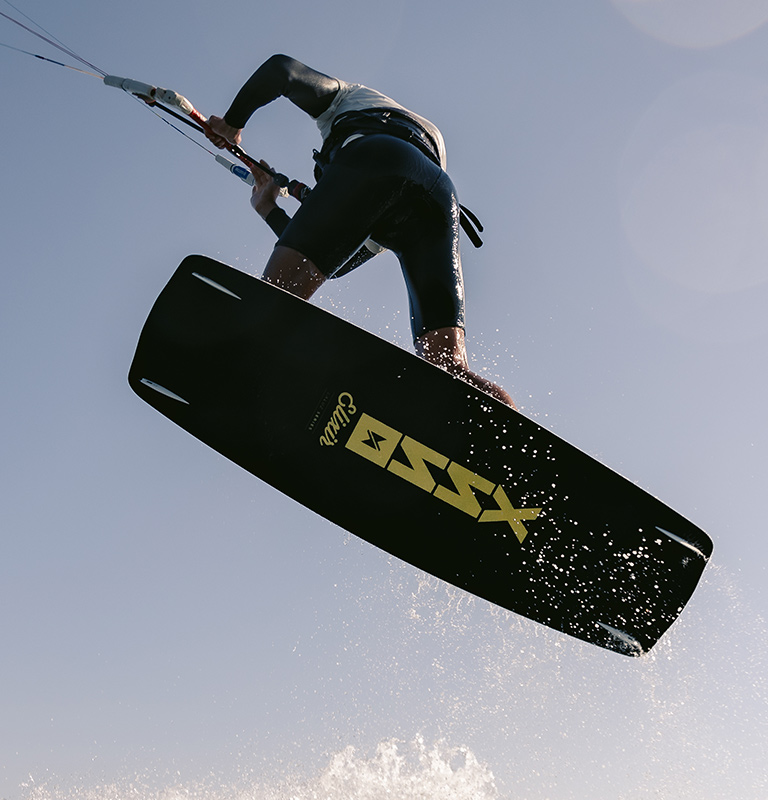
Risk vs. Reward: Interview with Lewis Crathern
Features / Fri 25th Feb, 2022 @ 9:00 am
With one of the worst and most widely seen crashes ever seen in a kiteboarding competition, Lewis Crathern knows more about the risks of kiting than most. To achieve as much as he has in his kitesurfing career, a bumpy road is almost inevitable. We spoke to Crathern shortly after that injury in a feature called ‘Back from the Brink‘. For the first IKSURFMAG issue of 2021, we checked back in to find out how his approach to kitesurfing has changed since the accident.
The pursuit of glory in kitesurfing isn’t always easy, and you know that better than most! Being a top-level athlete in any sport comes with significant risk; kiting is no different. Is this something you’re always conscious of? Do you accept potential injury as a side-effect of your career choice?
To be honest it’s something that I think I have learned to bury deep down in the subconscious. I know that it’s possible to get injured but I try not to think about it. I rather focus on how I can minimise my risks and be safe on the water.
Your crash at the 2016 Red Bull King of the Air was shocking. Can you tell us a bit about what you went through?
I remember riding well and feeling like the gods had finally delivered a 35 knot + KOTA, it was the semi final and my first run out I saw yet another great kicker. It ever so slightly closed on me and rotated me 90 degrees on the way up (effectively backwards on and upside down) I sent the kite round, committed to a back roll but never fully made it round. I battled to get out of a strange backwards on position and that was that. 9 days later I woke up from an induced coma in Hospital….
6 years on, and looking back, what I have gone through (and sometimes still am) is a journey of self forgiveness. I caused a lot of stress and worry on that day, the likes of which I have never experienced myself as I have not seen somebody In that position.
After seeing the video of what happened, it was clear I had lost partially lost my airborne spacial awareness. This for me has to be the biggest fear of all big air riders. When we are so high up and sometimes moving so fast through the air, it’s something that you can simply never allow to happen.

Win a Xenon Elixir Twin Tip & T-Shirt this issue in our FREE subscriber prize draw.
Your awareness in the air, of where your kite is and where you are in relation to it are the foundations of being a good big air rider.
Fortunately there was no broken bones etc to heal, but with taking in so much water to my lungs I had to rest up and build myself up for over a year to get back to where I was.
Was that the worst kiting injury that you’ve ever had?
The KOTA crash has to be the biggest injury I have ever had. Like most kiteboarders I have damaged ribs countless times but other then that I’m still going strong.
When you got back on the water, did the memory of that incident affect the way you rode or the risks you took on the water? Does it today?
I never recall a struggle, or physically drowning so in that way I have no bad memory of the incident. When I first went kiteboarding again it was emotional. I thought about how lucky I had been and how others had lost their lives in far less a kiteboarding crash.
I often forget that the crash even happened. It is only when I reminded about it that I consciously think ‘oh yeah that massive crash I had’. It has never effected the way I ride as far as how far I want to push it but it has got me to think about how I ride when I am on my own. As much as kiteboarding is a sport safer to practise together, you sometimes can not avoid being the only one out.
My passion is for storm chasing and riding in extreme weather. These conditions add extra risks and I’m finding an easy way to minimise them is to use the WOO APP. Activating my beacon before a big session for example, is such an easy way to let others (many others in fact) know that I am on the water.
What does an injury like that mean for your career? Your sponsors? And you personally (family, finances, mental state)?
It depends how your career is set up. I am not competing as much as I used to and with my career spread amongst work in schools, coaching and commentating an injury would not necessarily end my career in kiteboarding but perhaps if I was 100% competition focused it would be different.
Fortunately at the time of the KOTA injury (and still presently) I have had some really supportive sponsors. I have been on the international team for Duotone for 7 years, Windguru have supported me for 8 years and WOO a long time also. I also have a great wind energy sponsor and have learned not to keep all my eggs in one basket.
I feel that being a professional sportsperson is a state of mind, just in the same way being self employed is. When I think back to when I was 18 first finding my way in the kiteboarding world, it’s been such a meandering journey. You learn to adapt, move towards new opportunities and change the way you work when required. You ride the ups and downs on the rollercoaster of life.
Naturally an injury effects you mentally and its the mental game that is the most challenging. Physically you know you can train, get fit again and get back to riding well but when everything around your life is based on kitesurfing, the lows or simply a bad session really effects you. It’s the shape of a triangle. At the very top and always the most important is my own passion for kiteboarding. The energy then filters off downwards into all the other aspects of what being a professional entails for me.
Is the risk of serious injury worth the reward of your pro career in kitesurfing?
100%
Has your perception of that changed after injury, or as you’ve gotten older and your life and priorities have changed?
Things do change once you get older. I have a family now, a mortgage to pay, I have responsibilities to deal with away from the water, but does it change how I ride?
I can’t talk for how other pro kiters feel whom there are many now in a similar position. In my case nothing has changed how I ride in the strong conditions. I have questioned if it’s selfish and should I try to change. Is it wrong even, irrresponsible?
At 36, I have come to learn that it’s somebody else out there that takes over and I can’t control it. I have accepted it’s the person I become on the water.
We’re glad to see this UK legend is riding as hard as ever, with as much passion as ever. Crathern is a strong example of what relentless passion for this sport looks like, and we’re stoked that, off the water, he puts so much time and energy into sharing our sport with others. Find out more about what Lewis Crathern has been up to on his website!
Profile and cover photos by Eunice Bergin.
By Crystal Veness
Editor at IKSURFMAG, Crystal Veness hails from Canada but is based in South Africa. When she isn't busy kitesurfing or reporting on the latest industry news for the mag, she is kicking back somewhere at a windy kite beach or working on creative media projects.


















